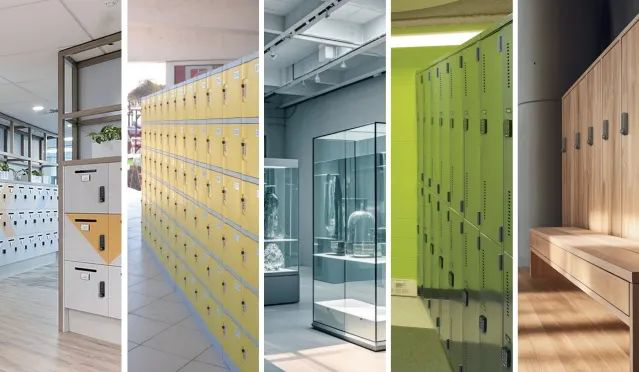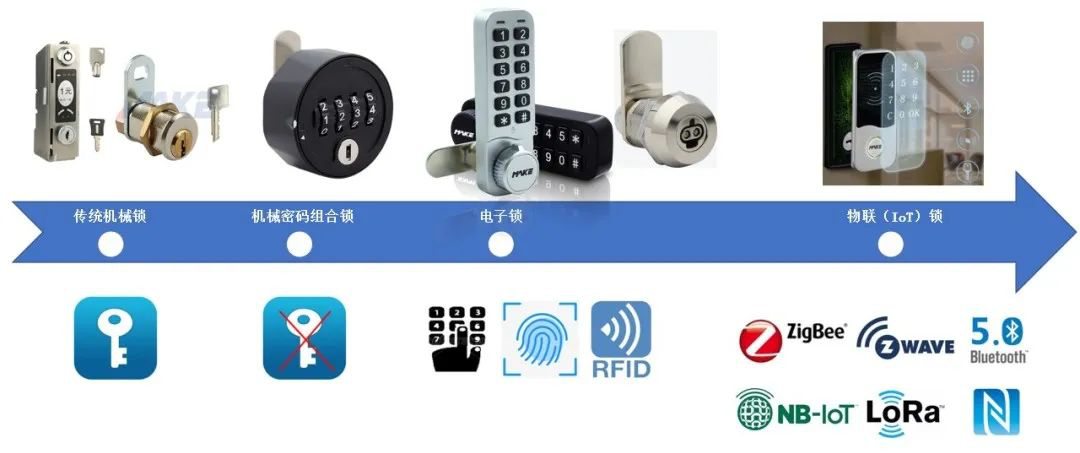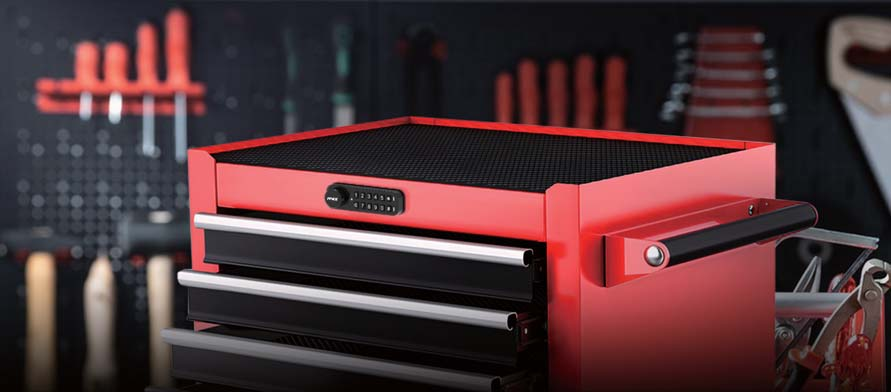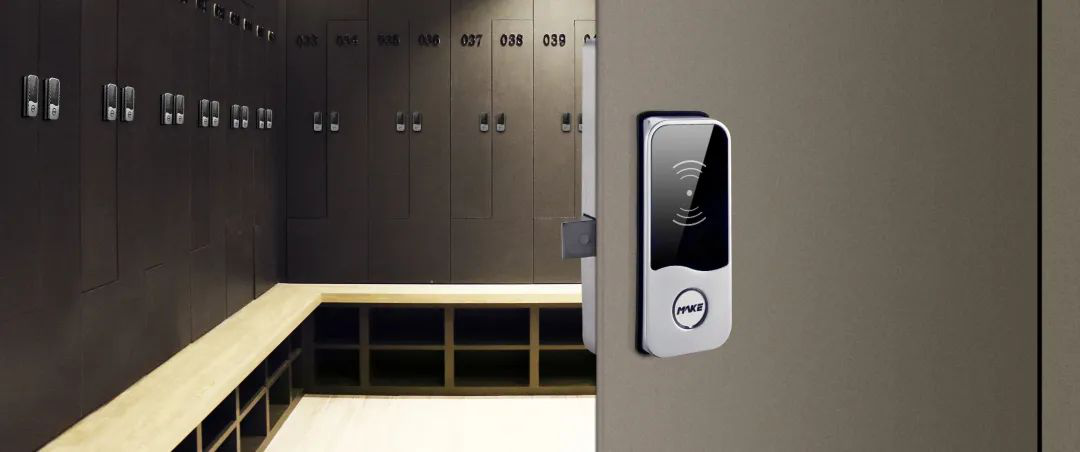Over the past 20 years, the lock industry has undergone a profound transformation—one that mirrors broader technological shifts while also influencing them in return. In this mutually reinforcing cycle, advances in electronics, communications, and materials science have “fed back” into lock technology, spurring rapid upgrades. At the same time, lock manufacturers have leveraged independent innovation to break long-standing conventions, creating ripple effects across sectors from public facilities to consumer electronics.
Among the key players shaping this evolution, Make has consistently stood out. Over two decades, the company has maintained a forward-looking approach—tracking emerging trends, anticipating market shifts, and developing locker locks and other access control solutions that redefine security and convenience. Its innovations have not only kept pace with global developments but have actively set new benchmarks in locker systems, smart terminals, smart cities, transportation, and 3C (computer, communication, and consumer electronics) peripherals.
To mark this milestone, Make is releasing a special multi-part series that revisits its development journey. This series will reveal the company’s behind-the-scenes strategies, technological breakthroughs, and industry insights that have driven its success. Part 1 focuses on locker locks and storage systems, a market that has evolved from simple mechanical devices to AI-powered, networked solutions.

The evolution of locker systems over the last two decades can be traced through three major generations, each defined by its control mechanism and user experience:
The earliest lockers relied solely on mechanical systems. Access was granted through physical keys or coin-operated mechanisms, offering basic security but minimal flexibility. They were widely used in gyms, swimming pools, libraries, and workplaces where simplicity and durability were paramount.
As microelectronics became more accessible, lockers transitioned to electronic control. Access could be granted using barcodes, numeric passwords, or magnetic cards. This reduced the reliance on physical keys, simplified reallocation for new users, and improved operational efficiency for facility managers.
Today’s smart lockers integrate multiple authentication methods—RFID cards, fingerprint recognition, facial recognition, and even smartphone-based access. These systems are often connected to cloud platforms, enabling advanced features such as:
Backend permission configuration for precise access control
Remote monitoring of locker usage and status
Real-time operation tracking for security and analytics
These upgrades have transformed lockers from simple storage units into digital assets that support smart city ecosystems, e-commerce logistics, and corporate infrastructure.
|
Three Development Stages of Locker Systems |
||
| Development Stage | Retrieval Method | Characteristics |
| Mechanical Storage | Manual Storage: Valid ID, Storage Voucher | 1. Dedicated staff required for storage management, making the work mechanical and cumbersome 2. Inability to operate storage independently, wasting time and effort, with a complex storage process 3. Potential errors during storage, and items may be lost due to human factors |
| Self-Service Locker: Lock (or Coin + Lock) | 1. Users must carry coins or keys for storage 2. Resource wastage, with instances of one person occupying multiple lockers |
|
| Electronic Storage | Barcode, Password | 1. Barcodes or password slips are easily lost during use 2. Barcodes often become damaged, making locker access impossible |
| Smart Storage | RFID Card | 1. Users must carry an RFID card for storage 2. Low cost, secure, and fast |
| Biometric Recognition: Face, Fingerprint, Iris, Retina | 1. High security, convenient, and fast 2. Higher cost and maintenance complexity |
|
| Locker Management System Based on Barcode, RFID, and Biometric Technologies | 1. High security, convenient, and fast 2. Grid-based management |
|
From the very beginning, Make has been deeply involved in the locker industry’s transformation. Over the years, its locker lock solutions have advanced through four key stages:
Traditional Mechanical Locks – Durable, reliable, and cost-effective.
Mechanical Combination Locks – Offering keyless security with customizable number codes.
Electronic Locks – Integrating password, barcode, and RFID access.
IoT-Enabled Smart Locks – Supporting advanced wireless protocols and cloud-based management.

From Key-Based to Keyless Access: Transitioning away from physical keys to codes, cards, and biometric identification.
From Private Use to Hybrid Public-Private Models: Serving both exclusive users and shared-access environments, such as parcel lockers or co-working spaces.
From Standalone to Networked Control: Expanding from no management to three-tier management systems—local, regional, and cloud—capable of integration into enterprise platforms.
From Offline to IoT Connectivity: Incorporating 5G, NB-IoT, LoRa, Zigbee, and WiFi to ensure real-time communication and remote operation.
This evolution has allowed Make’s solutions to meet the diverse needs of industries as varied as logistics, retail, public services, and corporate offices.
Make’s latest generation of IoT-enabled smart locks is designed not just for security but for full lifecycle management. Through dedicated software platforms, operators can:
Assign and revoke access permissions instantly
Track locker usage statistics for operational insights
Detect and respond to unauthorized access attempts in real time
Integrate with payment systems, delivery notifications, and customer apps
By combining hardware durability with software intelligence, Make has positioned itself as a comprehensive solution provider, not just a hardware supplier.
As digital ecosystems expand, Make is now exploring AI-powered smart lockers. These next-generation systems will incorporate:
Predictive maintenance using AI algorithms to forecast potential lock failures
Behavioral analytics to detect unusual patterns and enhance security
Seamless integration with broader smart city infrastructure, enabling lockers to serve as nodes in urban IoT networks
Personalized user experiences, such as automated locker assignment based on preferences or usage history
By blending artificial intelligence, machine learning, and edge computing with proven lock engineering, Make aims to redefine what a locker can be—not just a place to store belongings, but an intelligent service hub.

Toolboxes

Drawer Cabinets

Filing Cabinets

Locker Rooms

Storage Cabinets
The journey of the locker industry reflects a broader truth: innovation thrives where technology meets necessity. From mechanical locks to AI-powered smart lockers, Make’s 20-year evolution underscores the importance of anticipating change, investing in R&D, and embracing digital transformation.
As this series continues, we will explore how Make applies the same innovation-driven philosophy to smart terminals, urban infrastructure, and transportation systems, revealing the strategies that have kept it ahead of the curve in multiple sectors.
The story of smart lockers is just the beginning—the next chapter in Make’s journey is already being written.
